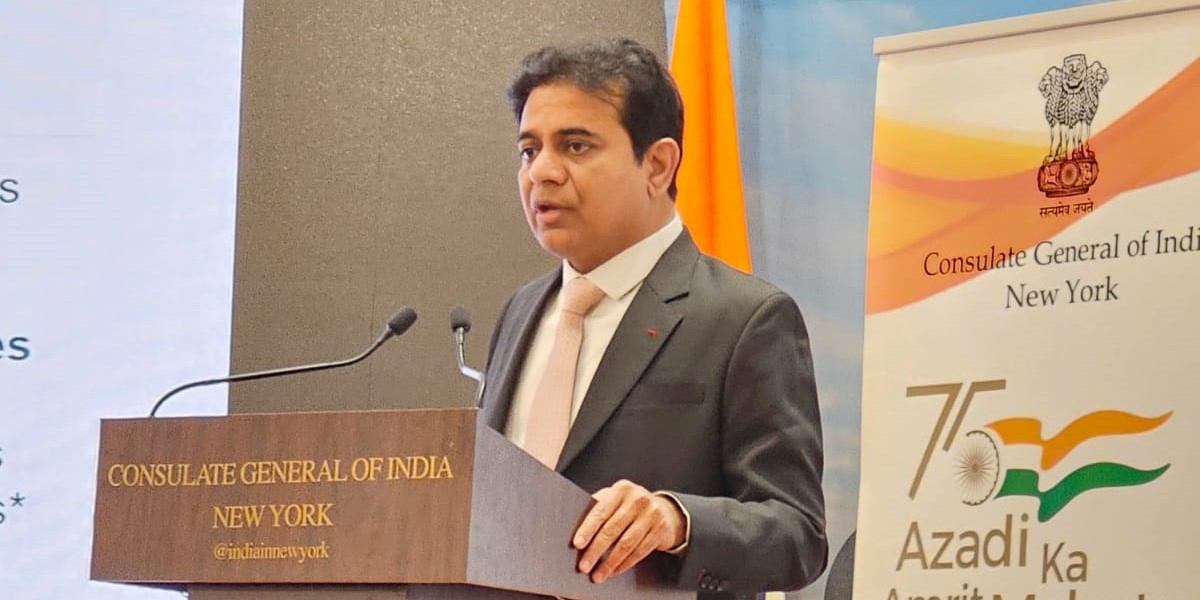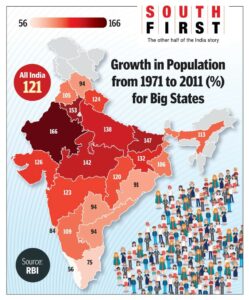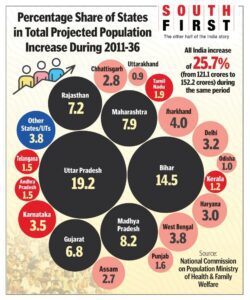He said it was unfortunate that South India was being denied justice as it had followed the advice to control the growth of the population.

KT Rama Rao. (Twitter)
Telangana Information Technology and Industries Minister KT Rama Rao has raised the fear that has been lurking in the minds of all politicians in the South — that the number of Lok Sabha seats in the South would shrink significantly after the delimitation exercise that is scheduled for 2026.
He has, with the help of a graphic, shown the constitution of the new Parliament after the next delimitation exercise in 2026.
He put the figures as follows: Uttar Pradesh and Bihar: 222, the five Southern States: 165, and other states 461. The new Parliament Building’s capacity is 888.
 KTR maintains that the delimitation exercise based on population will do a great injustice to the South which implies that the Delhi throne is out of bounds for any leader from the South.
KTR maintains that the delimitation exercise based on population will do a great injustice to the South which implies that the Delhi throne is out of bounds for any leader from the South.
He called for a united struggle by all parties in the South against the impending injustice, rising above their political considerations.
In a tweet, he said, “This is indeed a travesty and a tragedy if it does come true. Southern states of India have been the best performers on all fronts post-independence. Leaders and people of all Southern states need to raise their voices collectively cutting across political affiliations against this injustice.”
The Telangana minister, who is also the working president of BRS, said in a statement, that it was unfortunate that South India was being denied justice as it had followed the advice of the Centre to control the growth of the population.
“The delimitation exercise will result in a fewer number of Lok Sabha seats in the South and more in the North. On the other hand, the North Indian states which had not heeded the Centre’s advice and allowed population explosion, are set to gain,” he added.
The irony of the situation is those states that have not heeded to Govt of India’s decision on population control will now have the last laugh
Tamil Nadu, Kerala, AP, Karnataka and Telangana have done exceedingly well in population control will now be penalised!
Not only…
— KTR (@KTRBRS) May 29, 2023
He claimed that Kerala, Tamil Nadu, Andhra Pradesh, Karnataka, and Telangana are being punished for controlling the growth of the population in their respective states.
 “The Southern states, on all other development parameters, are ahead of the North Indian states which led to the Centre discriminating against them. The Southern states which house 18 percent of the country’s population have a 35 percent share in the gross domestic product,” Rama Rao said.
“The Southern states, on all other development parameters, are ahead of the North Indian states which led to the Centre discriminating against them. The Southern states which house 18 percent of the country’s population have a 35 percent share in the gross domestic product,” Rama Rao said.
The states, which were helping in nation-building and its economy, are set to lose their importance after the delimitation, he said.
There are fears that the power balance between the South and North would be further skewed.
There are also concerns that there would be lesser devolution of funds to the South from the Centre as they are performing well and it may affect the allocation of seats reserved for the SCs and STs.
The Southern states have been dreading this Damocles sword for a long time. They do not know if they have to feel happy that they have achieved progress on all fronts compared to the North, or watch helplessly, as the North gains greater political representation on this count.
The exercise of increasing the number of Lok Sabha has never been uniform. There has to be one Lok Sabha member for every 10 lakh population. But the number has not increased each time the census is taken.
For the first time in 1967, the number of seats was increased commensurate with the population.
In 1976, the number went up to 543 based on the 1971 census. After that delimitation exercise has not been done though a census was being taken every 10 years.
This is because the 42nd amendment to the Indian Constitution stayed the delimitation exercise for 25 years until 2001, which was extended by another 25 years till 2026.
Article 82 of the Indian Constitution allows Parliament to make an Act for delimitation of the constituencies after each census.
After the Act is passed, the Centre constitutes a commission which will be headed by a chairman. It will have as members CEC or two election commissioners, five Lok Sabha and an equal number of MLAs from each state.
The reason why it was extended yet again in 2001 was the opposition from growing states like Tamil Nadu and West Bengal which expressed fear over losing the number of seats as they had contained population growth keeping in mind the nation’s interests.
Also, the Centre, ruled by the BJP-led National Democratic Alliance (NDA) government of Atal Behari Vajpayee, was heavily dependent on the support of South Indian parties such as the TDP and the DMK.
In fact, in the 2019 elections, the then president Pranab Mukherjee had said that the number of Lok Sabha seats should be increased to 1,000, as, when the last delimitation was done, the country’s population was only 55 crore.
As it has more than doubled, the increase in the number is desirable.
The South looks at the proposal with suspicion.
As KTR had said, the population growth had slowed down in the South on account of the progressive measures taken which resulted in a paradox: Those who contained population growth are being punished, and those who allowed the population explosion to benefit.
According to a report by the Carnegie Endowment for International Peace in 2019, Northern states would gain by more than 32 seats because of delimitation and the South would lose about 24.
It had said Bihar and Uttar Pradesh alone would get 21 more seats, while Tamil Nadu and Kerala would get 16 less.

May 03, 2024

May 02, 2024

Apr 29, 2024

Apr 27, 2024

Apr 16, 2024

Apr 15, 2024